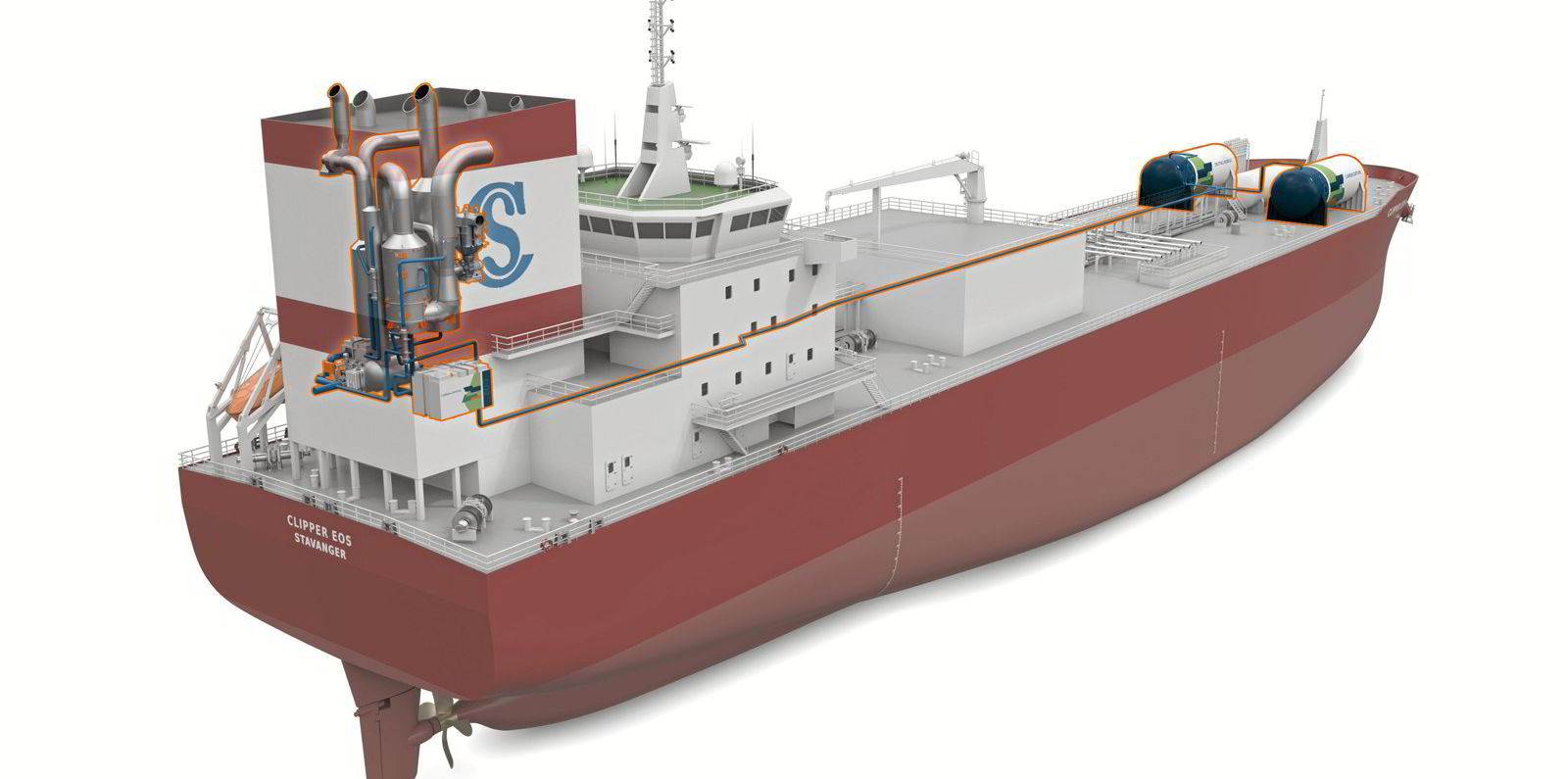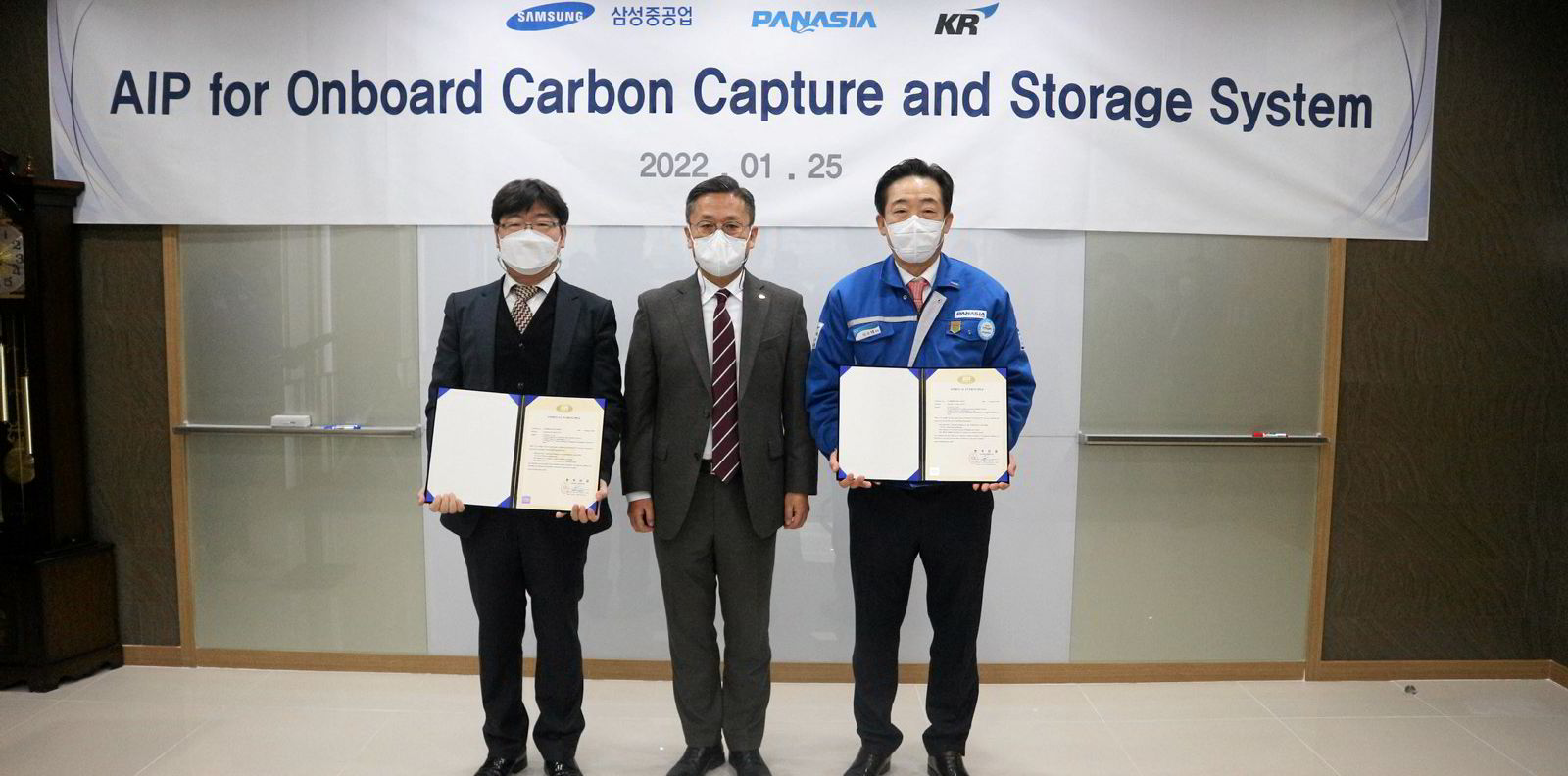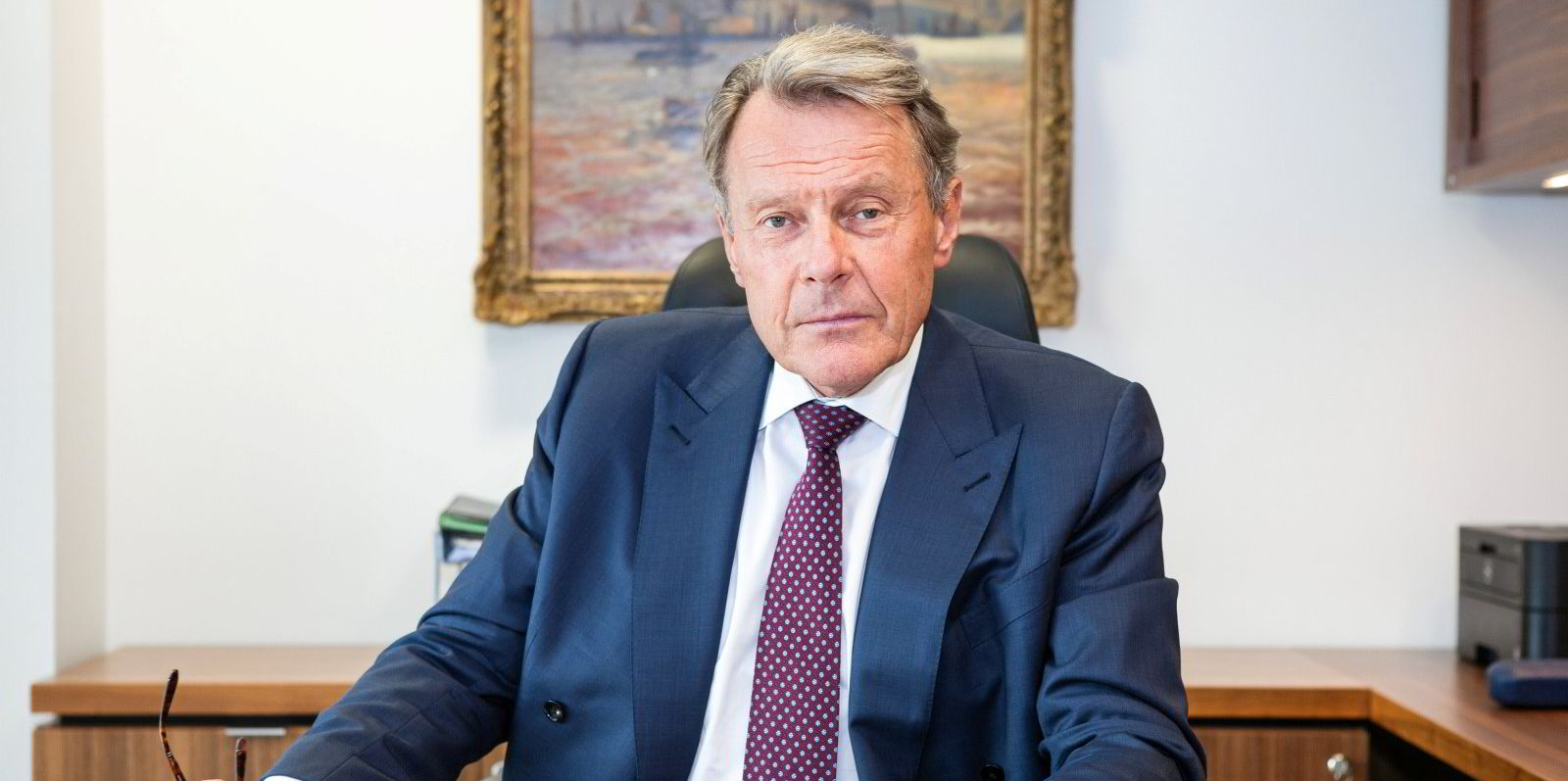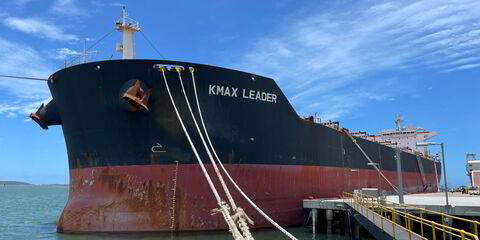Wartsila is pretty confident that its work on developing carbon-capture devices for exhaust gas scrubbers will pay off handsomely one day, though it has yet to sell its first unit.
Amid a push to tackle greenhouse gas emissions, shipowners have shown strong interest in the kits, said Sigurd Jenssen, the company’s director of exhaust treatment.
The Finnish scrubber and engine maker continues to develop the technology, which will add carbon capture to scrubbers now used for sulphur emissions.
“The phone hasn’t stopped ringing, so there is a lot of excitement,” he told TradeWinds.
“I’m sure that we will get pushed on the cost, but overall I’m not saying that it’s prohibitive compared to other technologies.”
Helsinki-based Wartsila would not say which shipowners, or how many of them, are interested in carbon capture.
Jenssen said Wartsila is trying to reduce the device’s height from 40 metres to 12 metres before it conducts extensive testing, to make sure they do not break down while ships are at sea.
The company has not come up with a price tag for them yet, but it does not expect to have units on the market until 2025 anyway, he said.
“They’re still in development but if we had a product to sell, we would have. I am quite sure,” he said.
“We just want to make sure that we do the testing properly and that we have some quality assurance on what we will be delivering, so we haven’t sold anything yet.”

He said the devices may hike bunker costs by $80 per tonne, but some owners will still opt for them over burning costly low-sulphur fuel oils or retrofitting their ships for alternative fuels.
“If you take ammonia or hydrogen, for example, they will require more space and have bigger implications on the load-carrying capability of the vessel,” he said.
They do take up cargo space
It is the storage tank for the captured CO2 that takes the most space. For example, he said a carbon-capture unit on a 22,000-teu container ship may take up 4,000 teu of cargo space.
“The whole of it, of course, hinges on, do we want to decarbonise the industry?” Jenssen said.
“If there’s no financial incentive or no reason to do it, then you won’t install the carbon-capture plant nor will you use any other device, nor will you use ammonia or hydrogen.”
But there is plenty of reason to do it.
The International Maritime Organization is developing its Energy Efficiency Existing Ship and Carbon Intensity Indicator (CII) regulations as part of its drive to reduce carbon emissions by 40% by 2030 and by 70% by 2050, compared with 2008 levels.
“The transition we are embarked in is a fundamental shift for this industry, which is totally dependent on fossil fuels today, but change is already happening and the IMO guidelines will support decision-making by stakeholders,” IMO technical officer Camille Bourgeon told TradeWinds.
Wartsila is banking on the need of owners to meet CII compliance by 2024 as the key incentive for them to invest in the carbon-capture devices.
“The Carbon Intensity Indicator index is perhaps the most immediate one, where a number of older ships will start to get issues with complying with it,” he said.
Wartsila has signed an agreement with Norwegian shipowner Solvang to install a small pilot unit on its 21,000-cbm ethylene carrier Clipper Eos (built 2020) by 2023 or early 2024.
Wartsila hopes the unit, which will be fitted to existing scrubber equipment and include deck storage tanks, will remove 70% of CO2 emissions from exhaust.
Jenssen declined to say whether or not Solvang was putting any money into the project.
“Not that we can share anything with you guys but I think they are as excited about this as we are,” he said.
K Line is already testing the technology
K Line, a diversified shipowner with 448 ships, installed the world’s first carbon-capture kit on its 89,000-dwt coal carrier Corona Utility (built 2016) in August last year as part of the CC-Ocean demonstration project.
The Tokyo-based company said it placed a “very small-scale” unit, which was developed with Mitsubishi Shipbuilding and classification society ClassNK, on the ship to evaluate its performance on the ocean.
K Line said its first priority was to test out the entire carbon-capture, utilisation and storage process from capturing the carbon to storing it underground.
“There are many technical challenges in each process which we have to overcome,” it told TradeWinds.
Wartsila is confident that the IMO’s Carbon Intensity Indicator (CII) index will create huge demand for carbon-capture devices on ships, but what is CII?
The CII measures how efficiently a ship transports goods or passengers and is given in grams of CO2 emitted per cargo-carrying capacity and nautical mile, according to classification society DNV. The ship is then given an annual rating ranging from A to E, whereby the rating thresholds will become increasingly stringent towards 2030.(Copyright)
Read more
- ESG special report: How maritime is starting to embrace blue sky agenda
- On sustainability journey, NYK Line aims to link ESG to executive pay
- A question of scope: Pressure on supply chain emissions provides catalyst to cut carbon
- ‘You are being rated’: Better ESG reporting starts with actually filing a report






